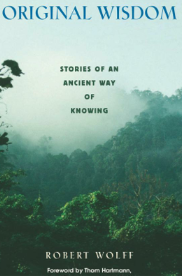One can sense the feeling, excitement, of the elephants--but it is not hysterical, uncontrolled, as the rampaging "gangs" are.
Yes, there are stories about "rogue elephants." But, I have been told, that most of them are grossly exaggerated and, in any case, rare and always the consequence of great stress to an individual. All hurt animals are dangerous.
It appears that without adults to guide a young elephant for the many years of her/his growing up, s/he cannot learn to be elephant.
~ ~ ~
On the internet there are now several searing accounts of young men and women who speak out after returning from Iraq. A young man, trained to be tough, visibly fighting to not show emotion, shaking his head, repeating "I killed. I am not a killer. That is not me!" Another young man, speaking in a hall, keeping his eyes closed as he talks, haltingly, "I did not feel anything," he says, "I don't know myself any more. I did what they told me to do. Shoot." After a long silence, very softly, "Kill." The overwhelming emotion comes across strongly even without words.
Thirty-one percent of veterans returning from Iraq and Afghanistan are diagnosed with "mental health and psychosocial problems," many of them with post traumatic stress disorder (PTSD). Almost one third of our fighting men and women come home over-stressed. Individual stories emphasize the disorientation and confusion people feel after having been inserted into a modern war on the ground.
In modern wars many more civilians than warriors are killed or otherwise affected. How do civilians cope? How must the now more than one million Iraqi refugees feel? What of the refugees from Darfur's ethnic cleansing?
How do children grow up when parents and other adults are ill, perhaps disabled, from stress?
Now and then I have wonder about the Chinese, who invented gun powder, but for centuries used it only for fireworks and noise makers. It evidently never occurred to them that it can be used to kill and destroy. Westerners discovered that. Our modern world could not do without any more.
~ ~ ~
Many, many years ago I attended an annual meeting of the AAAS, the American Association for the Advancement of Science, publishers of the journal Science. One of the keynote speakers was psychologist, John B. Calhoun. He reported on a study he had done with mice (of course), wanting to learn whether mice have a culture, a society, and what that culture is like. He also was interested in how populations grow--his may have been one of the early studies in demography.
The mice would live in cubes, 10 X 10 X 10 feet. with balconies and skyways, stairs and ramps: a model world for mice, with unlimited food and water.
I remember (I lost the printed version I had) that he could not start a population with just one Adam and one Eve. I do not recall the minimum number, but it was larger than a dozen, I think. And as they did what mice do, and the population increased along the curve we all have seen, he observed their behavior. The mice paired off, made nests, males and females had different roles. Offspring was cared for. Calhoun observed the communication of mice, with gestures, behavior, the position and direction of ears, eyes, the tail, etc.
Then the mouse population came to the point where the curve became an S-curve, flattening out at the top. Remember, unlimited water and food; the external circumstances had not changed. The only change was population density.
The behavior of mice changed radically. Female mice became began to neglect their young, became casual mothers, then bad mothers, then eating their young. Males had other new behaviors: tail biting, avoiding females, then avoiding each other except for occasional males mounting other males. In short, the mice began to behave very un-mouselike, and obviously in ways that would endanger their survival.
(Note: You can view every article as one long page if you sign up as an Advocate Member, or higher).





